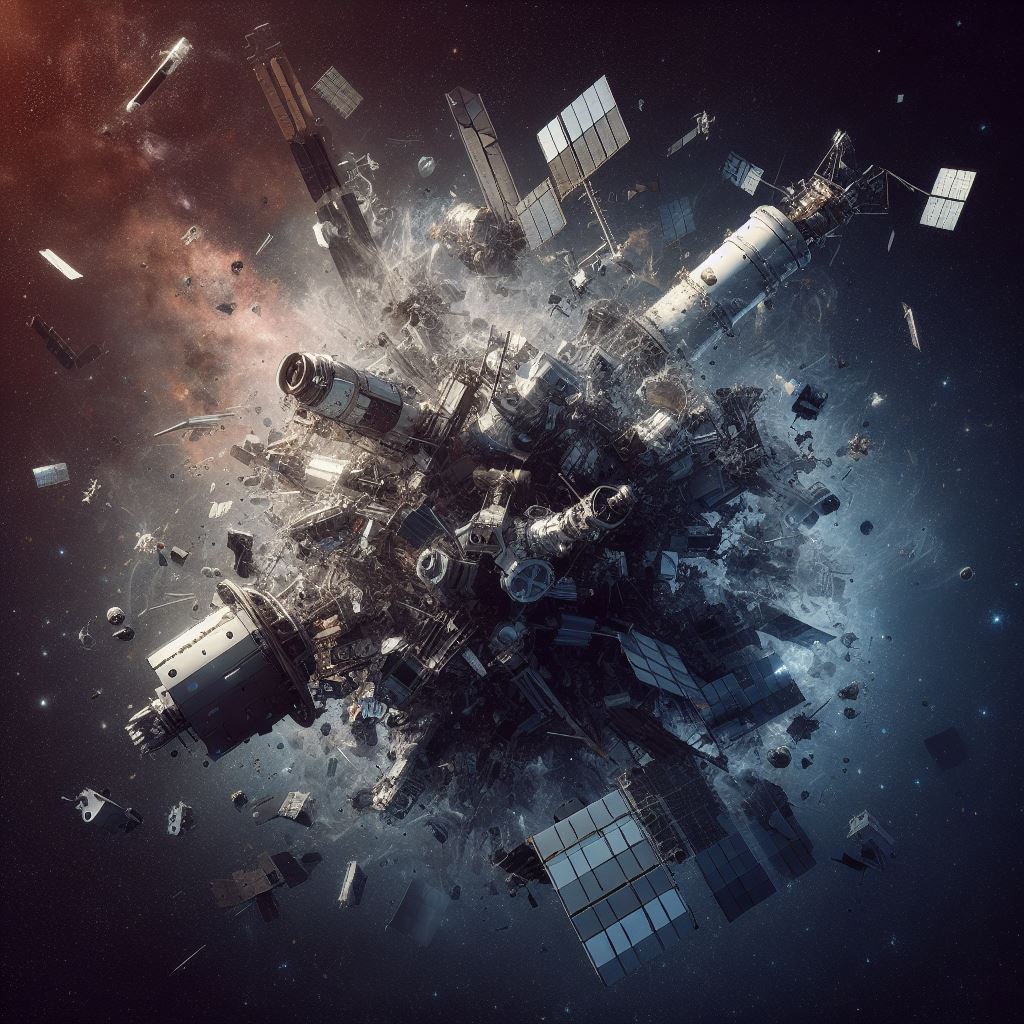Report by Alekhya Chavan
“Old accountants never die. They just lose their balance.
Old burglars never die. They just steal away.”
We have all heard these jokes. But what really happens to… old satellites? What happens to the things we send to space after we have stopped using them?
Space junk is like a cosmic trash problem. Imagine bits and pieces of old satellites, parts of rockets, and other stuff from space missions all floating around up there. Sometimes, these things bump into each other and make even more debris (waste matter). It’s a bit like bumper cars in space, but not as fun.
All this clutter can cause some serious problems.
Why is space junk a problem?
First of all, it can be dangerous for astronauts and the International Space Station (ISS). Remember that movie “Gravity”? In the movie “Gravity,” space debris is depicted causing damage to a Space Shuttle and the ISS, highlighting the real-life concern about space junk’s potential danger. This serves as an example of the hazards posed by space debris and emphasizes the importance of managing and reducing it for astronaut and space asset safety. It showed how space debris can cause big trouble.
But that’s not all. Space debris can also mess up important things like communication, weather forecasting, and GPS. Imagine trying to use your GPS for a road trip, and it doesn’t work because of space junk – that wouldn’t be fun.
How should we deal with this?
So, what’s the plan to clean up this space mess? The United States Federal Aviation Administration (FAA) has come up with some rules. They want to make sure old rocket parts don’t stay in space forever. Right now, there are no rules about how long they can stay up there, but the FAA wants to change that.
Their idea is to give rocket parts a time limit in space. Once that time is up, they should come back down to Earth in a controlled way. This helps reduce the risk of more crashes in space and keeps people on the ground safe.
The FAA also wants space companies to follow some new ways to get rid of old rocket parts. This means they have to think about space cleanup more seriously.
In the FAA’s report, they mentioned that Earth’s orbit is already crowded with over 23,000 big objects and millions of smaller ones. That’s a lot of stuff floating around, and it’s getting crowded up there.
The United States is not the only country working to manage space junk. Several other countries and international organizations are also actively involved in addressing the issue of space debris.
1. European Space Agency (ESA): ESA has been involved in space debris reduction/ mitigation efforts, including research and tracking of space debris, as well as developing guidelines for spacecraft design to minimize the creation of new debris.
2. Russia: Russia has its own space debris monitoring and mitigation programs. They have also participated in international discussions on space debris mitigation.
3. Japan: The Japan Aerospace Exploration Agency (JAXA) has been researching and developing technologies to capture and remove space debris from orbit.
4. China: China has launched missions aimed at studying and monitoring space debris. They are also researching technologies for space debris removal.
5. India: India, through the Indian Space Research Organisation (ISRO), actively monitors space debris, follows international guidelines for debris mitigation in spacecraft design, conducts research on space debris, and contributes to global efforts to ensure responsible space activities and the protection of satellites and the space environment.
6. United Nations: The United Nations Office for Outer Space Affairs (UNOOSA) coordinates international efforts to address space debris through initiatives like the Space Debris Mitigation Guidelines and the long-term sustainability guidelines for space activities.
These countries and organizations are actively working together to manage and mitigate space junk, emphasizing the importance of collaboration and international cooperation in addressing this global challenge.
They want to make sure space is a clean and safe place for astronauts, satellites, and all the amazing things we use space for. That way, we can continue exploring the final frontier without worrying about cosmic collisions (crashes).

